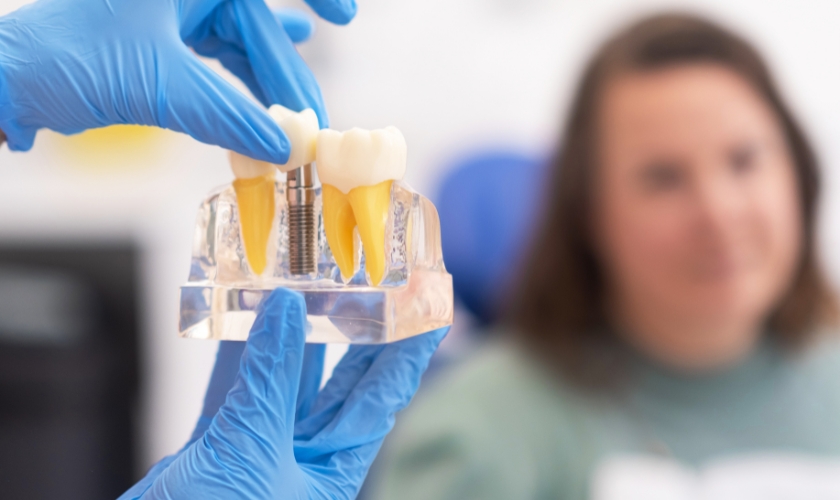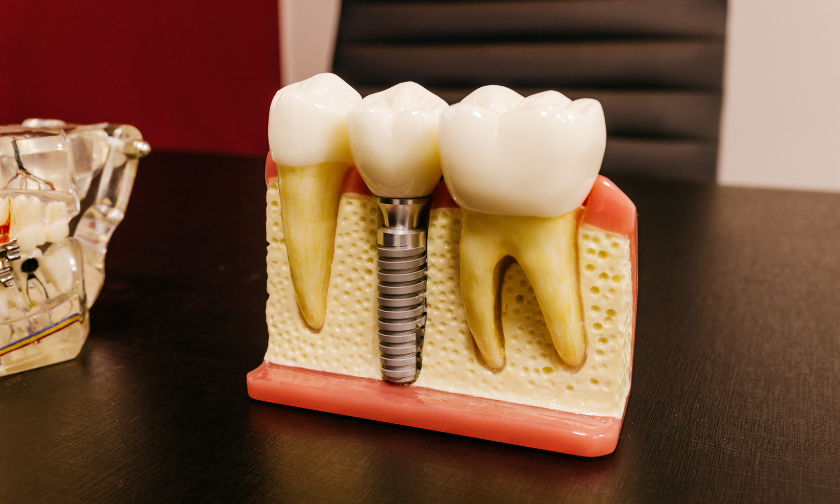
Dental implants are an excellent solution for people looking to restore missing teeth. They offer a long-term, natural-looking replacement that functions just like real teeth. However, the healing process after dental implants is an important phase to ensure the success of the procedure. Proper care and attention during recovery play a key role in the final outcome.
In this blog, we’ll walk you through the stages of healing after dental implants and what you can do to support the process. Understanding the healing journey can help you feel more prepared for the recovery ahead. Here’s what to expect and how to ensure a smooth healing process after dental implants.
Initial Healing: The First Few Days
The first few days after dental implants in San Antonio are crucial for recovery. During this time, the body begins the process of integrating the implant with the bone, a phase called osseointegration.
Here’s what you should expect:
- Pain and swelling: It’s common to experience some discomfort, swelling, or bruising around the implant area. Your dentist may prescribe pain medications to manage any discomfort.
- Bleeding: Slight bleeding is normal, but it should subside within a few hours. You may be given gauze pads to bite on to help control the bleeding.
- Diet: Stick to soft foods for the first few days. Avoid hot or spicy foods, which could irritate the area. It’s best to eat cool, soft foods like yogurt, soup, and mashed potatoes.
- Rest: Try to rest as much as possible during the first few days to allow your body to heal properly.
It’s essential to follow your dentist’s aftercare instructions carefully to avoid complications.
Weeks 1 to 4: Early Stages of Recovery
As the days pass, the implant will begin to fuse with the jawbone, and you’ll start to feel better. However, you still need to be cautious and patient during the first month.
Key points to focus on:
- Swelling subsides: Swelling and bruising should gradually decrease. However, some mild discomfort may still persist, particularly when chewing.
- Oral hygiene: It’s vital to keep your mouth clean. Use a soft-bristled toothbrush and be gentle around the implant site. Avoid using mouthwash with alcohol as it can irritate the healing gums.
- Follow-up visits: Your dentist will schedule a follow-up appointment to check on the progress of the healing process. They may take X-rays to ensure the implant is fusing correctly with the bone.
- Avoid smoking: Smoking can slow the healing process and increase the risk of complications. Try to quit or reduce smoking during the recovery period.
You may begin to feel more comfortable within these first few weeks, but full healing will take time.
Months 1 to 3: The Bone Integration Process
At this stage, your body is continuing the process of osseointegration. The implant is bonding with your jawbone, which can take anywhere from 3 to 6 months, depending on the individual.
Here’s what to expect:
- Bone growth: During this phase, new bone tissue forms around the implant, strengthening the foundation.
- Gradual increase in comfort: While discomfort should be minimal by now, you may still experience some tenderness in the implant area, especially when chewing hard foods.
- No major dental work: It’s usually during this time that your dentist will not place the permanent crown until the implant is fully integrated. This ensures the best fit and durability.
- Maintaining good oral care: Keep brushing and flossing, but avoid disturbing the healing area. Regular visits to the dentist are important for monitoring progress.
Although the healing after dental implants is well underway, you should remain patient for complete integration.
3 Months and Beyond Full Recovery and Final Restoration
After several months of healing, the implant should be fully integrated into the jawbone. Now, the final step in the process can begin, which is placing the permanent crown or restoration.
Here’s what happens next:
- Restoration placement: Once osseointegration is complete, your dentist will place the permanent dental crown, bridge, or denture on the implant.
- Ongoing care: Keep up with your oral hygiene routine to prevent infection and gum disease. Regular dental check-ups are essential to monitor the health of your implants.
- Long-term care: With proper care, dental implants can last for many years. Avoid habits like biting your nails or chewing on hard objects, which could damage the implants.
At this stage, you should experience a fully functional and aesthetically pleasing smile, giving you the confidence to eat and speak comfortably again.
Tips for Speeding Up the Healing Process
While the healing process after dental implants is unique to each individual, there are several things you can do to help support the process:
- Stay hydrated: Drink plenty of water to promote healing and maintain oral health.
- Follow your dentist’s advice: Stick to the guidelines provided by your dentist to prevent complications.
- Avoid strenuous activity: While light movement is fine, avoid heavy physical activity for the first few weeks after your procedure.
By following these tips, you can enhance the recovery experience and ensure the best results.
Healing after dental implants is a gradual process that requires time and care. By staying patient, following proper aftercare, and attending follow-up appointments, you can enjoy the full benefits of your dental implants in San Antonio. Remember, the investment in your smile is worth the wait!


